In a world where attention spans are shrinking, UX design for startups can make or break the user's experience, ultimately impacting your bottom line.
We will explore practical UX design solutions and strategies for startups struggling to gain a foothold in the digital marketplace. Buckle up for some insider advice from design professionals and entrepreneurs, and get ready to soak up some inspiration for your next design project!
Related: What I Learned About Quality Design
What is UX Design?
User Experience (UX) design plays a pivotal role in shaping the everyday products and services we interact with. It encompasses every user interaction with a product or service. The entire user experience, including the user's emotions and the ease with which they achieve their desired outcomes, is carefully considered during the UX design process.
The principles of UX design can be applied to various mediums such as physical products, mobile applications, websites, web applications, and more. In all these applications, the ultimate objective is to craft an experience that is intuitive, efficient, relevant, and enjoyable for the user.
Key components of UX design include:
- UI/UX design (combining UI and UX for intuitive interfaces)
- User research (understanding target audience)
- Information architecture (organizing content and features)
- Usability testing (identifying issues)
- Responsive design (adapting to different devices)
- Interactive prototyping (testing and refining)
- UX strategy (aligning design with business goals).
5 Reasons to Choose Custom UX Design for Startups
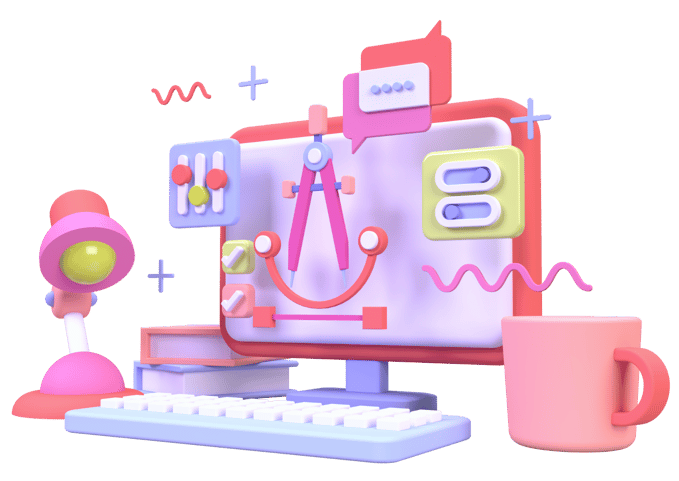
Early-stage startups often purchase bootstrap templates as a way to expedite their development process, thereby avoiding the time-consuming process of tinkering with CSS or creating their own UX design from scratch. Sometimes the canned approach can be helpful, but not all of the time.
So, why should you choose custom design?
- Brand Differentiation: Custom design enables the development of a distinct visual language that allows startups to create a unique and memorable brand identity.
- Tailored User Experience: Custom design allows startups to tailor their branding elements, such as logos, color schemes, and typography, to align perfectly with their vision and target audience. It's like having a bespoke suit tailored specifically for your startup, ensuring a perfect fit that exudes professionalism and creativity.
- Flexibility and Scalability: Custom design provides startups with the flexibility to adapt and evolve their brand as their business grows. Unlike bootstrap templates, which can be restrictive, custom design allows for scalability, ensuring that the visual identity remains cohesive and aligned with the startup's evolving goals and objectives.
- Enhanced Credibility: Investing in custom design demonstrates a commitment to professionalism and attention to detail. It can enhance the startup's credibility in the eyes of potential customers and investors.
- Long-term Cost Savings: While bootstrap templates may seem cost-effective initially, they often require customization and modifications down the line, resulting in additional expenses. Custom design, on the other hand, allows startups to create a tailored solution from the start, minimizing the need for costly redesigns or rebranding efforts in the future. According to research from Forrester, every dollar you put into UX Design could give you a $100 return.
Related: What Is Design Thinking
Get A Free Copy of The 'Just Start (Up)' eBook
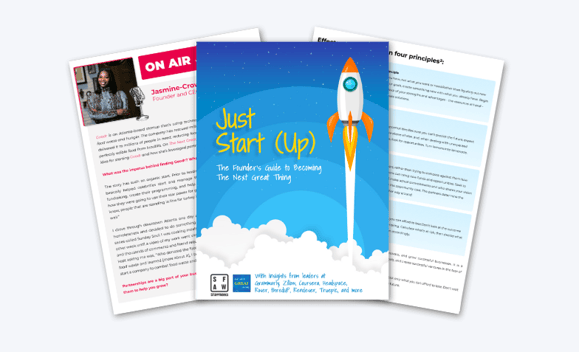
UX Design Professionals and Entrepreneurs Share Their Tips on TNGT Podcast
We talked to product and design experts from leading technology companies on The Next Great Thing podcast. Here’s what they had to say:
| Point |
Lessons learned from Leslie Witt, Chief Product & Design Officer, Headspace Health |
Lessons learned from Jenny Arden, Chief Design Officer, Zillow |
Lessons learned from Kyle Rand, CEO and Co-founder, Rendever |
| Usability |
One of Leslie’s favorite principles of product and design is “beneficence” – ensuring that a product actually helps the user, not just creates engagement. |
Observing users in the wild through ethnographic research can reveal surprising insights that inform product design. Best designers are “divergent thinkers who are super hungry to solve real human problems”. |
Rendever puts seniors, their families, and caregivers at the center of its product and UX strategy – and why, when designing for this older demographic, it’s critical to “reduce friction and add joy”. |
| Solution |
While generative AI has the potential to revolutionize mental health care (and beyond), product teams need first to create guardrails that allow for safe experimentation and protect against catastrophes – big and small. |
Zillow is using computational image processing and rich media to translate 3D into 2D to help homebuyers experience the true essence of a home. |
In senior living communities across the U.S., Canada, and Australia, older adults are using Rendever’s VR platform to travel the world, revisit their past, get fit, swim with dolphins, see the Aurora Borealis, and even climb Mount Everest. |
Startup vs Established: The UX Design Dilemma
The design dilemma between startups and established businesses is not just about the differences in their resources, but also in their goals. Startups tilt more towards rapid growth and innovation, while established businesses need to maintain their brand image and keep up with the competition.
Designing for startups versus established businesses is a study in contrasts. Startups operate on a shoestring budget, work with limited resources, and tackle unique challenges with tight deadlines. To design for startups means to find new use cases to apply technology, which means attracting new users and providing a better user experience.
In contrast, established businesses tend to have a more loyal customer base, established sense of branding, and reputation for delivering quality products. Designing for them requires staying ahead of the curve, adapting to shifting market trends, and keeping the brand consistent while staying relevant in an ever-evolving business landscape.
Related: 5 Steps for Startup Founders to Embrace Empathy, Create a User-Centric Business, and Grow
Unlock Insights on Measuring Innovation and Relevant Metrics: Download This Valuable Resource
.png?width=401&height=401&name=innovation%20metrics%20mockup%20(11).png)
How Can Startups Use Design Thinking?
Design thinking offers valuable insights and approaches that can greatly benefit the startup ecosystem. Firstly, design thinking emphasizes empathy, enabling startups to empathize with their customers and gain a deep understanding of their experiences. This empathetic perspective helps in uncovering meaningful insights and developing innovative solutions that cater to the specific needs of the target market.
Secondly, design thinking promotes a culture of experimentation and iteration within startups. It encourages startups to embrace a mindset of continuous improvement and learning from failures. They can quickly test their ideas, gather feedback, and improve their offerings.
To learn more about the design thinking process and the design elements of an application, check out this video:
5 Impactful UX Design Solutions for Startups
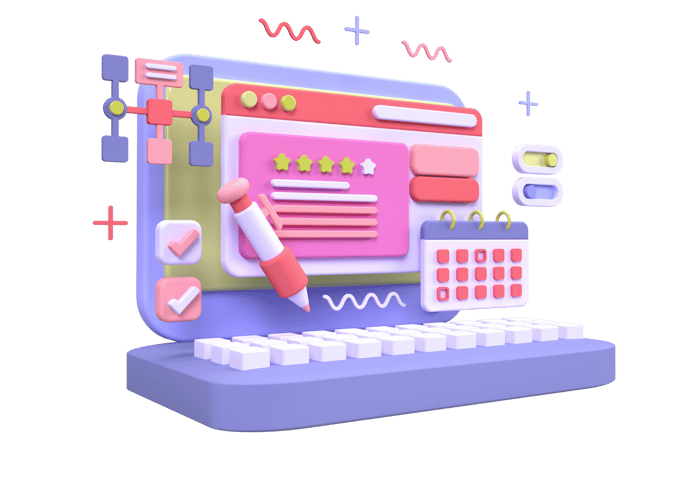
1. Understanding Your User
The first step in designing a great user experience is to understand your target user. Knowing who they are, what they need, and how they interact with your product is key to creating an intuitive design that meets their needs. Start by gathering information about your users through user surveys, user testing, and market research. Once you have a clear understanding of their behavior, you can create amazing UX designs for startups.
Tip: Creating user personas can be a helpful way to visualize and understand your target audience. It's important to have a clear understanding of your users' needs, pain points, and motivations to design an experience that truly resonates with them.
Best Practice: Create a user flow diagram that outlines the steps your user takes to complete specific tasks. This key UX design solution for startups will help you identify pain points and areas where your design can be improved for a better user experience.
Related: A UX/UI Field Guide
2. Keeping it Simple
One of the most common mistakes startups make when it comes to UX design is trying to do too much at once. While it's important to create a memorable and unique user experience, it's equally important to keep things simple. Overcomplicating your UX design for startups can confuse users and lead to frustration. Start by focusing on the core functionality of your product or service and build from there. A minimalist approach to design can be just as effective as a more elaborate one, so keep it simple and intuitive.
Tips:
- Prioritize features based on user needs and feedback.
- Limit the number of steps required to complete a task.
- Use whitespace effectively to create a clean and uncluttered design.
Related: Best Books For Entrepreneurs To Rev-Up Their Startup Success
3.Consistency is Key
Consistency is key when it comes to UX design. Creating a consistent experience across your product or service will help build trust with your users and increase their confidence in your brand. This means using the same language, design elements, and navigation throughout your product or service. Consistency can also help streamline the user experience and make it easier for users to complete tasks.
Tips:
- Develop a style guide that includes design elements and language guidelines.
- Use consistent navigation and layout throughout your product or service.
- Maintain consistent branding across all channels.
4. Mobile First
With the rise of mobile usage, it's essential that startups prioritize mobile design in their UX strategy. Designing for mobile first ensures that your product or service is optimized for smaller screens and touch interactions. Mobile design also forces you to focus on the most important features and content, which can lead to a better user experience overall.
Tips:
- Prioritize the most important features for mobile devices.
- Design for touch interactions, such as swiping and tapping.
- Optimize images and videos for mobile viewing.
Best practices: Think a few moves ahead. That means your digital product should be mobile-responsive, aligned with your overall strategy and goals, and built to last. Also, consider hiring an external UX designer or agency instead of a full-time employee. You'll only have to pay for the hours worked and get access to a whole team of experienced designers and developers. Plus, you'll benefit from objective discussions that can break down subjective assumptions holding back your project or startup.
Watch Our Webinar To Learn How To Ideate, Design, And Develop Effective Mobile Apps
Level up your skills so you can create your own mobile app.
5. Testing and Iteration
Finally, testing and iteration are crucial to the success of your UX design. Startups should be constantly testing and refining their design to ensure that it meets the needs of their users. User testing can help identify pain points and areas for improvement, and iteration can help address those issues and improve the user experience over time.
Tips:
- Conduct user testing early and often.
- Use analytics to track user behavior and identify areas for improvement.
- Iterate and refine your design based on user feedback and data.
Best practice: The idea behind Lean UX is to work in small, agile sprints in close collaboration with the development team. Instead of starting from scratch, you can focus on improving specific weak points in the product in short, iterative cycles. This approach is perfect for testing and refining solutions and making deliverables more realistic, all while keeping costs low.
Avoid involving your friends or family in user testing, as they may not provide honest and critical feedback due to their desire to spare your feelings. It is crucial to receive unfiltered opinions during the early stages of development in order to understand if the product actually works in the real world.
Related: Rapid Prototyping Services
How Can We Help?
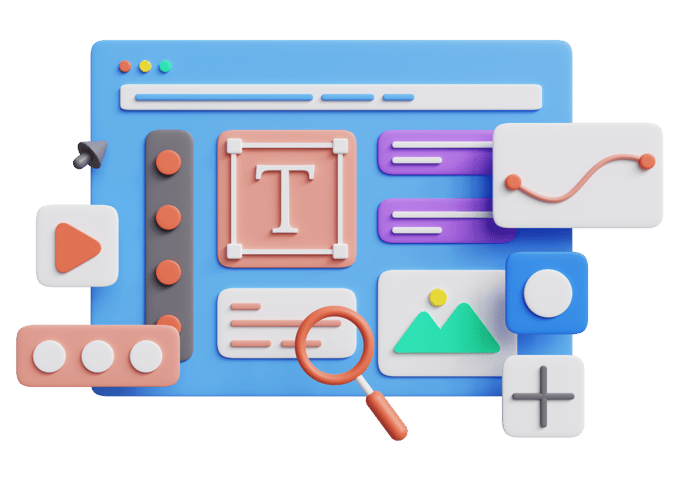
Our team of UX design experts is here to help you bring your vision to life, whether you're looking for a project-based or staff augmentation approach. We have a passion for working with startups and small businesses—which has allowed us to contribute to many success stories.
Our idea of success involves collaborating with clients who share our passion for making a positive impact on people's lives. When we take on a project, we mean it.
Check out some of the folks who let us do that:
The Bottom Line On UX Design For Startups
As Kurt Vonnegut once said, "We have to continually be jumping off cliffs and developing our wings on the way down." This sentiment perfectly encapsulates the experience of designing for startups. It's a constant process of trial and error, of taking risks and learning from mistakes. But with the right mindset and approach, startups can create UX designs that not only meet the needs of their users but also set them apart from the competition. By focusing on user research, simplicity, accessibility, and flexibility, startups can create designs that are truly innovative and effective.
.jpg?width=300&name=UX%20solutions%20for%20startups%20-%20cover%20image%20(1).jpg)


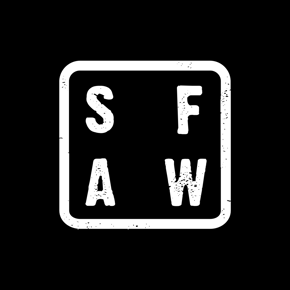
COMMENTS